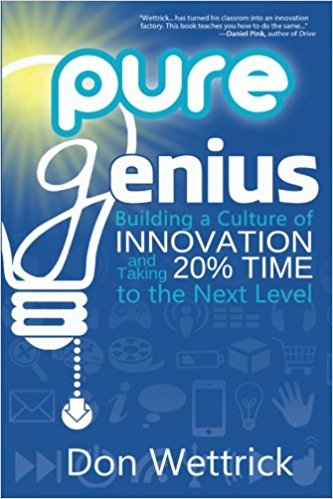What's New in the Alludo Catalog ?
“It would take us years to roll out all the PD that we can on Alludo." - Kathy Jackson, Director of Teaching and Learning for K-12, YCJUSD
Genius Hour, or 20% Time, encourages students to take control of their learning -- to explore their interests and find a personal purpose in their education. Teachers give students a set amount of time per week to study a topic of their choice, and decide what they want to create or produce as a result. A student interested in art might learn about color theory and create a collage, while another student interested in space might study the Mars Rover and create their own prototype. The possibilities are endless.
How you work Genius Hour into your classroom is up to you -- but the learning that happens is up to your students! Decide how long and how often your students will work on their projects, and how you plan to support them. You could have them submit a proposal with their topic, learning plan, and ideas about what they'll create to demonstrate what they've learned.
Review the resources below to learn more!

"In Pure Genius, Don Wettrick encourages teachers and administrators to collaborate--with experts, students, and one another--to create interesting, and even life-changing opportunities for learning. You'll discover:

"[The book] provides a process that can be incorporated into every class at every grade level ... even if you don't consider yourself a 'creative teacher.' [...] teachers will discover practical strategies for using design thinking in the classroom to engage, inspire, and empower students. Here are a few key takeaways:
Connect with other educators implementing Genius Hour in their classrooms, or share what you've learned by tweeting #GeniusHour.
Please join @the_gifted_guy TONIGHT at 7pm Central for…
Please join @the_gifted_guy TONIGHT at 7pm Cen… https://t.co/tEGD8eHByT

“It would take us years to roll out all the PD that we can on Alludo." - Kathy Jackson, Director of Teaching and Learning for K-12, YCJUSD

“One test of the correctness of educational procedure is the happiness of the child.” ~Maria Montessori

As educators, we've all experienced the challenge of evaluating student assignments filled with scattered ideas and jumbled thoughts, leaving us...